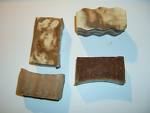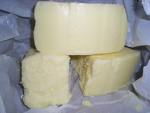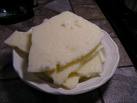Lighting the wick of past: History of tallow-use in candle making
There were times when people lived by the schedule of the Sun and the Moon. Especially, the night time pursuits of man were timed based on the rising and setting of the moon. Once it was called the Hunter’s moon, later (as herding became a favorite occupation) it was called the Shepherd’s moon and much later, when civilization emerged with agricultural lands, it became the Harvest moon.
Light was almost unheard of, but for the oiled lamps and crude fireplaces. Only much later, candles came into being. If one looks into the annals of the 17th century, candlesticks or chandeliers were uncommon among people. Even the wealthiest had only a few candlesticks to brag about. A study on a Dutch household inventoried between 1698 to 1840 lists no chandeliers or lighting equipments of better sort, except tallow candles. Domestic lighting improved with years. With the dawn of the 19th century, every home had its own stack of candles.

Primitive tallow candles: Primitive candles were nothing but a wick of several loosely twisted threads encrusted with tallow. Coarse cotton thread was used as wick to hold the tallow wax. The tallow candles were unruly and flickered time and again. Since the wicks were not self-consuming, the burnt wicks had to be cut every time the tallow candle flared up or flickered. Farmers or poor people who did not have enough wealth to kill cows for tallow, used candle-berry tree, also called as tallow shrub for making candles. The defect with these tallow shrub candles were, they did not soften or bend as easily as regular tallow candles. However, they burned brightly without foul odors. Tallow candles were considered as a possession till the late 18th century.
Old-time tallow candle making: Only rendered animal fat was used in candle making and mutton or pig fat was considered inappropriate compared to beef fat. This candle beef fat was scraped off generally from the butcher’s. Fatty matter that was scraped off at the tanner’s place had lowest content of usable tallow, while that which was directly obtained from the butcher’s had prime tallow. Nothing of the beef fat was wasted as women used almost all available, usable tallow in candle or soap making. Generally, tallow was made in the following method:
1. Rendering of tallow: Women melted the fatty mass in an iron pot over low fire. As the fat melted, they skimmed of the meat fragments and other impurities. After several hours of boiling, cracklings or other unwanted floating chunks were removed through sieving. Since tallow hardened at room temperature, women added water to the sieved, pure liquid and boiled it again in low temperature. Only after several hours of further boiling, the mixture was allowed to cool in an earthen pot. The cooled mixture formed a pure white tallow on top, with gelatin and other sediments below. The obtained tallow cake was used in candle making along with beeswax.
2. Two types of candles: An encyclopedist in 1849 wrote, “there were two types of tallow candles – dipped and molded. While the dipped are of old standing, the latter are said to be the invention of a Parisian”. Dipped candles were used in domestic lighting as they required no special expenses. A number of dipping rods, each holding 12 to 15 wicks were prepared in advance. Each wick was then dipped in melted tallow and allowed to cool. The process was continued till the tallow candle gained its desired size. Molded candles were a French invention, where people poured tallow wax into molds to make candles.
3. Candle recipe: A candle recipe of the bygone eras read like this: Dissolve 25 lbs. of beef tallow in a copper or brass vessel by adding 20 lbs of water. Add 1-1/2 qt of brandy, 5 oz of tartar cream, 5 oz of ammoniac solution, 5 oz of tartar salt, 2 oz of dry and clean potash to the mixture. Once completely heated, cut the cake into slivers and allow to cool. Make wicks of best cotton steeped in wine or wax. Then, pour heated tallow in the moulds with wicks. Allow the mould to cool and then, shape your candles for use.








